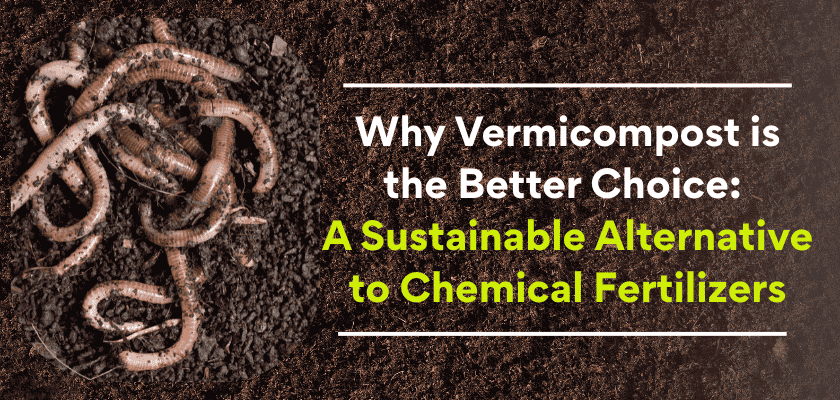
You may be surprised to learn that there is a carbon time capsule in nature that can be converted into a long-lasting soil enhancer that not only improves plant growth but also stores carbon for centuries deep in the earth. It is well-known as biochar, a soil-loving, sustainable hero that protects the environment, fights climate change, and even provides a means of recycling garbage.
Biochar represents a charcoal material that develops through the pyrolysis process from organic sources. Biochar received its initial agricultural and forestry applications years ago yet scientists now study its expanded environmental applications because the material enhances soil conditions while serving as a carbon storage element.
The practical usages of biochar for soil nutrition enhancement along with carbon storage are examined through this research document. This research combines laboratory experiments with field experiments along with case studies to understand biochar applications for agricultural development and climate change reduction.
2. What is Biochar?
Biochar emerges as a tough substance containing high carbon content which results from heating organic materials under oxygen-depleted conditions (i.e. pyrolysis). Biochar production requires a wide selection of organic feed materials that include agricultural residues along with forestry waste animal manure and municipal solid waste. Biochar shows different chemical elements according to the feedstock types and pyrolysis parameters although carbon makes up the majority of its composition (60% to 90% while hydrogen, oxygen, nitrogen, and minerals exist in lesser quantities.
Production Process (Pyrolysis)
The production of biochar occurs when organic materials reach temperature ranges from 300-700°C under oxygen-depleted conditions. During the process, the main product is solid biochar with additional byproducts including bio-oil and syngas. The pyrolysis process for various feedstock materials needs specialized industrial equipment for a period of several hours to days for completion.
Types of Biochar
The production conditions together with the feedstock materials determine two biochar category types:
Wood-based biochar: Produced from hardwood, softwood, or agricultural residues.
Manure-based biochar obtains its origin from animal waste helps boost soil structure and improves fertility when applied to agricultural land.
Biochar generation from agricultural residue includes rice husks together with corn stalks and wheat straw.
3. Biochar and Soil Improvement
Effects on Soil Fertility
Researchers extensively investigate the positive aspect of biochar which enhances soil fertility. The increased potential of soil to exchange cations available for effective nutrient retention emerges due to biochar application. Through biochar application soil retains essential plant nutrients such as potassium phosphorus along with nitrogen more efficiently.
Enhancing Soil Structure and Texture
Biochar enhances the soil structure by creating increased pores while promoting better aggregates between soil particles. The soil becomes aerated along with less compact while roots penetrate easily leading to better plant growth. Soil erosion decreases due to how biochar makes the soil more stable and increases its water retention abilities.
Water Retention and Drainage
The porous quality of biochar enables it to hold water so crops need fewer irrigations. Biochar has the ability to maintain six times its dry weight amount of water and this powerful water storage helps protect plants during drought periods. The water drainage capacity of biochar enhances heavy clayey soils because it stops flooding.
Microbial Activity and Biodiversity
Biochar provides suitable living space for essential microorganisms found in the soil. The surface area of biochar serves as a secure environment that encourages microbial biodiversity and increased microbial activity. Biochar creates a healthy microbial colony that enhances soil processes linked to nutrient cycling and organic matter breakdown and ecosystem health.
4. Biochar as a Carbon Sequestration Tool
Carbon Sequestration Process
The leading environmental advantage of biochar occurs through its capability to capture carbon from the atmosphere. The carbon component contained in feedstock remains inside the biochar product during the pyrolysis process. The carbon molecules inside biochar maintain stable conditions in soil for more than 200 years which achieves carbon offsetting of greenhouse gases. The process of Biochar functions as an effective method to fight against climate change effects. Biochar stands out as a potential solution for climate change control because it stops soil carbon from decaying while minimizing atmospheric greenhouses gasses. The deployment of biochar operations provides soil with two key advantages: it stores carbon effectively and diminishes the amount of powerful greenhouse gas nitrous oxide emitted by the soil.

Studies on Carbon Retention
Long-term studies conducted in the field have confirmed the effectiveness of biochar for carbon stocking. Biochar maintains carbon retention rates between 50-80% through an average of long-time preservation according to Schimmelpfennig et al. (2014), subject to influences from feedstock sources and soil conditions.
5. Practical Applications of Biochar in Agriculture
Case Studies and Field Trials
Scientists have documented worldwide agricultural uses of biochar through various studies that prove its efficiency in cultivating higher crop harvests. Researchers conducted a field experiment in Australia (Barrow, 2012) to discover that maize crops responded favorably to biochar application by achieving a yield boost of 35%.
Philippine rice farmers receiving biochar treatments experienced a 20% increase in yields with a corresponding 30% decrease in water needs according to study results (Verheijen et al., 2010).
Crop Yield Enhancement
The incorporation of biochar into soil increases biological quality and enhances both nutrients access and moisture preservation which results in superior crop production. The tests conducted by Bruun et al. (2014) demonstrated biochar added value to crop outputs between 10-20% in temperate climates.
Organic Farming and Soil Health
Biochar attracts organic farmers because its structural and fertility improvements function without the need for chemical fertilizers. The sustainable farming system benefits from biochar application which builds soil organic material content and limits chemical inputs demand.
Application Methods and Dosage
The amount of biochar application determines through analysis of soil conditions combined with agricultural plant varieties. Farmer usually apply biochar through two main techniques which involve mixing it into the soil before planting or spreading it on the surface after planting. Range of biochar application should fall between 5 and 20 tons per hectare to produce optimal results according to research findings.
6. Challenges and Considerations in Biochar Use
Environmental Impact and Sustainability
When manufacturers produce biochar at a large scale they create environmental impacts because of energy requirements and emission releases from the pyrolysis reaction. Sustainable production of biochar demands the employment of waste biomass alongside renewable energy system integration to reduce its environmental impacts.
Cost-Effectiveness and Economic Viability
The production expenses for biochar tend to be high particularly in cases where operations run at small scales. Research activities continue to develop more economical approaches for pyrolysis technology by optimizing performance together with finding affordable feedstock materials. Biochar’s extended advantages of enhanced agricultural production and improved soil vitality eventually pay back the expenses it requires.
Challenges in Large-Scale Adoption
The general implementation of biochar encounters significant barriers from the necessary infrastructure for manufacturing and distribution together with bureaucratic standards and farmer education about its potential. The elimination of these barriers needs combined work between researchers along with policymakers and industry stakeholders.
7. Future Prospects and Research Directions
Scientists are continuing to develop biochar research as new promising opportunities emerge. Research on biochar continues to advance through examinations about combining biochar with agroforestry methods and discovering new production methods and analyzing its use in urban farming systems.
8. Conclusion
Biochar functions as an effective method to enhance soil condition and combat global warming effects. Biochar presents agronomic benefits through improved soil fertility together with better water retention and stronger microbial activity suitability for sustainable agricultural practices. Carbon sequestration capabilities of biochar present a vital climate change solution because they help decrease overall greenhouse gas emissions. Biochar possesses strong potential to advance as a fundamental tool for combating soil degradation problems alongside climate change through increased innovation combined with policy backing.




I simply could not go away your web site prior to suggesting that I actually enjoyed the standard information a person supply for your visitors? Is going to be again continuously to inspect new posts